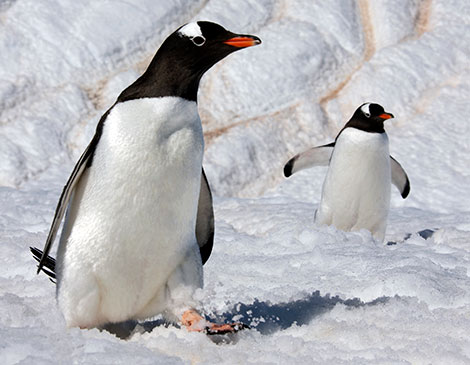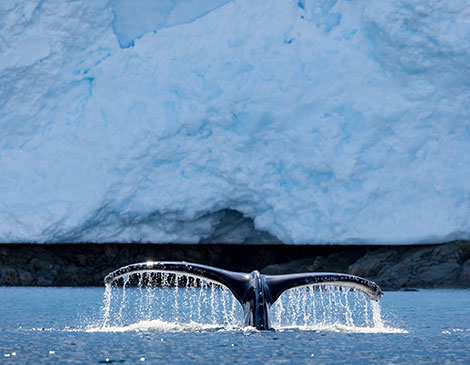Antarctica, the frozen continent, is a land of extremes where the harsh environment is home to some of the most fascinating wildlife on the planet. This remote and pristine wilderness is a haven for various animal species, many of which have adapted uniquely to the icy conditions. Antarctica's wildlife offers an unparalleled spectacle for nature enthusiasts, from the majestic penguins to the colossal whales and resilient seals. Understanding the best times to visit and the unique habitats of these creatures can enhance your polar journey, making it a truly unforgettable experience.
Penguins are among the most iconic and beloved inhabitants of Antarctica. These flightless birds are uniquely adapted to survive the extreme cold and harsh conditions of the frozen continent. There are 18 species of penguins found in the Antarctic region. Here, we will explore the most representative species found in Antarctica and their fascinating adaptations to life in this icy environment:

The following are the most common and representative species that inhabit the continent itself:
The Emperor Penguin (Aptenodytes forsteri) is the largest and heaviest of all living penguin species, renowned for its remarkable adaptations to the extreme conditions of Antarctica. This is a remarkable species, perfectly adapted to the extreme environment of Antarctica. Their unique breeding behavior and communal lifestyle make them a fascinating subject of study and a symbol of the resilience of wildlife in one of the planet's harshest habitats:
The Adélie Penguin (Pygoscelis adeliae) is one of the most widespread penguin species in Antarctica. They are smaller than Emperor Penguins, standing about 70 cm (28 inches) tall and weighing between 3.6 to 6 kg (8 to 13 pounds). Adélie Penguins are easily recognizable by their black and white plumage and distinctive white ring around their eyes:
The Chinstrap Penguin (Pygoscelis antarcticus) is named for the narrow black band under their head, which makes it look like they are wearing a helmet strap. They are similar in size to Adélie Penguins, standing about 68 to 76 cm (27 to 30 inches) tall and weighing around 3.5 to 5 kg (8 to 11 pounds):
The Gentoo Penguin (Pygoscelis papua) is easily identified by the wide white stripe extending like a bonnet across the top of its head. They are the third largest penguin species, standing about 75 to 90 cm (30 to 35 inches) tall and weighing between 4.5 to 8.5 kg (10 to 19 pounds):
The Macaroni Penguin (Eudyptes chrysolophus) is one of the crested penguin species, known for its yellow-orange crest feathers. They are about 70 cm (28 inches) tall and weigh between 3.2 to 6.4 kg (7 to 14 pounds):
Albatrosses and petrels are among the most awe-inspiring seabirds found around Antarctica's coastline. These birds are known for their remarkable flight capabilities, particularly their ability to glide effortlessly over vast stretches of ocean. Their impressive wingspans and endurance enable them to cover great distances, often following ships for long periods. These seabirds are not only a sight to behold but also play crucial roles in the marine ecosystem.
The best time to see albatrosses and petrels in Antarctica is during the austral summer, from November to March. This is when they are most active, nesting and raising their young. The extended daylight hours of summer provide ample opportunities to observe these majestic birds as they soar above the frigid waters. Their courtship displays and nesting behaviors offer a fascinating glimpse into their complex life cycles.

The icy waters and frigid landscapes of Antarctica are home to a fascinating array of mammal species that have uniquely adapted to the harsh environment. Among these are the magnificent whales that traverse the Southern Ocean and the resilient seals that inhabit the icy shores and waters. These mammals not only survive but thrive in one of the most extreme habitats on Earth, showcasing extraordinary adaptations and behaviors.

Antarctica, a land of ice and extreme conditions, is home to an astonishing array of marine wildlife, including the majestic whales and resilient seals. These incredible creatures are perfectly adapted to thrive in the icy waters and frigid landscapes of the southernmost continent. For wildlife enthusiasts, the best time to witness these magnificent mammals in their natural habitats is during the austral summer months, from November to March.
The optimal time for whale watching is from January to March. During these months, the whales are most active and visible, often breaching and feeding near the surface. This period offers unforgettable encounters, as you can frequently observe pods of whales engaging in spectacular behaviors:
Seals can be observed throughout the year, but the summer months from November to March are ideal for witnessing their interactions and breeding behaviors. During this time, seals haul out onto the ice to rest and raise their pups, providing excellent opportunities for close observation. The summer's extended daylight hours also enhance the chances of spotting these fascinating animals:
Plan your Antarctic Tour